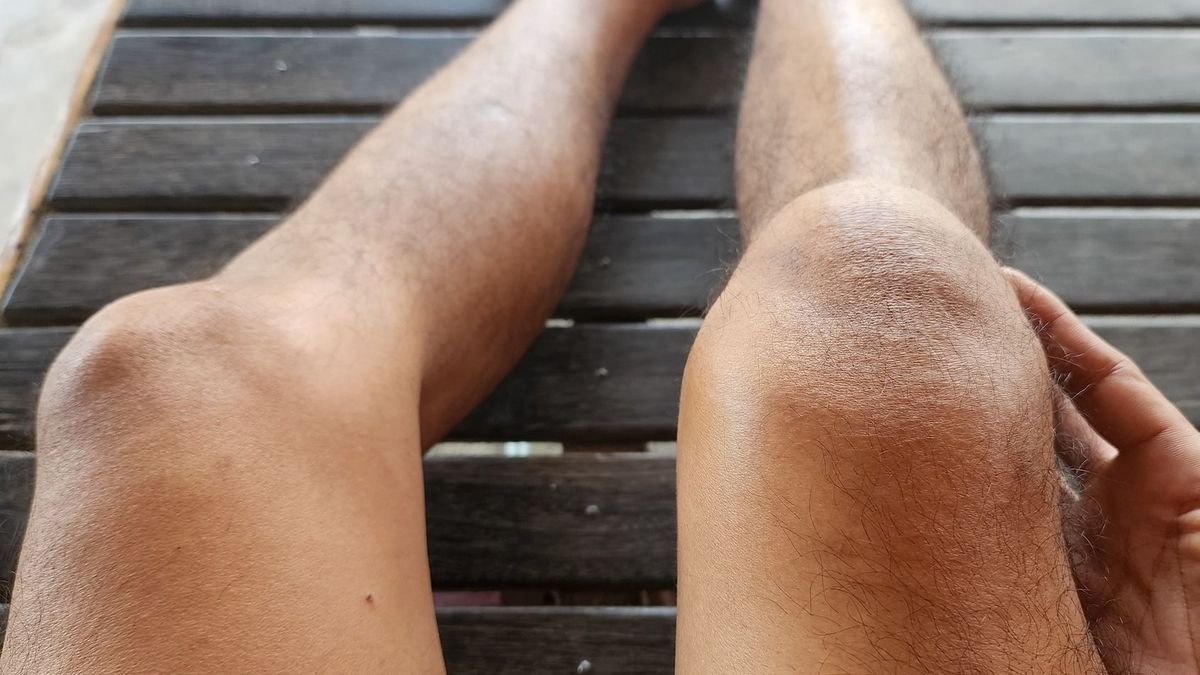
Dislocation of the patella can occur due to trauma or due to specific anatomical features. What to do in case of patella dislocation? Explanations from Dr Anthony Wajsfisz, orthopedic surgeon in Paris.
Also called “patella”, the patella is a bone located in front of the knee, caught between two tendons, the patellar tendon which attaches the patella to the tibia, and the quadriceps tendon which attaches the patella to the quadriceps muscle, the whole of this muscle forming the extensor apparatus. The patella is a bit like a pulley for reflecting these two tendons placed in a cup, the femoral trochlea. “On different occasions, the patella can come out of the femoral trochlea and dislocate, that is to say come out of its cup towards the external side of the knee”, underlines Dr Anthony Wajsfisz, orthopedic surgeon in Paris.
Defined by a loss of contact between two bones, a dislocation should not be confused with a ligament rupture or fracture. Likewise, dislocation of the patella should not be confused with dislocation of the knee, which brings together three bones (the patella, femur and tibia). If dislocation of the patella is defined as a loss of contact between the femur and the patella, dislocation of the knee corresponds to a loss of contact between the femur and the tibia. “A knee dislocation is therefore often an abuse of language and corresponds to a different medical situation.adds Dr Anthony Wajsfisz.
Furthermore, some people may be convinced that they have an internal dislocation of the patella. On an anatomical level, this is impossible: dislocation of the patella always results in a dislocation of the bone towards the outside of the knee.
Patellofemoral dysplasia or traumatic shock
Compared to other joint problems, such as cruciate ligament rupture, for example, patellar dislocation is much rarer.
There are two types of patellar dislocation:
- On the one hand, those which are favored by anatomical malformations or dysplasia, increasing the risk of patellar instability. “A flat femoral trochlea can favor the departure of the patella, just like a patella that is too high or poorly supported by the ligaments. specifies the specialist. Ligament hyperlaxity can also play a role. In these people, a first episode of dislocation can occur quite early, sometimes as early as childhood, and will tend to recur in the absence of appropriate treatment.
- Other cases of patella dislocation are caused by shock or trauma, particularly in connection with sports practice. “Sports that promote pivots, twists, twists, such as dancing or tennis, will promote the occurrence of a dislocation in people with anatomical predispositions., explains the doctor. However, most common patellar dislocations occur during everyday activities: simply getting out of a car or getting out of a bed that is too high, in children, for example.
Knee pain and swelling
A dislocation of the patella does not go unnoticed because it manifests itself as a deformation of the knee associated with intense pain, sometimes syncopal. It is generally accompanied by a rupture of the internal patellofemoral ligament, which causes swelling of the knee (hemarthrosis) and bleeding. Walking, or even standing, is therefore impossible.
Sometimes the bone snaps back into place on its own. On other occasions, some people manage to put the dislocated bone back into place in the femoral trochlea on their own. Failing this, emergency services (firefighters, hospital doctors) take care of it. “If it is rare, a passing injury, that is to say the tearing of a piece of cartilage during the reduction of the patella, can occur. This is something that must necessarily be screened for.” adds the orthopedic surgeon. To diagnose a reattached patellar dislocation, MRI remains the reference examination.
Once the emergency is handled, the knee must be immobilized in a splint for approximately six weeks while the soft tissues heal. Then, physiotherapy sessions are scheduled for a few weeks, or even a few months. “The objective is to restore mobility to the knee as well as volume in the quadriceps. explains the surgeon. Subsequently, wearing a knee brace is strongly recommended when resuming sporting activity after a few weeks, when the person can resume their usual activities.
Different possible surgical interventions
When episodes of patella dislocation tend to recur, the treatment is different. After a first episode, the downtime is generally shorter. However, repeated episodes of dislocation eventually wear out the patella and risk damaging the cartilage. In young subjects presenting with dysplasia, surgical intervention can then be considered. “I schedule an x-ray, an MRI and a CT scan. Once the assessment has been established, I offer “à la carte” surgical treatment, depending on the structural anomalies identified., continues the surgeon. X-rays make it possible to examine the shape of the knee and the trochlea as well as the height of the patella, while the scanner reports bone rotations. Finally, MRI helps to establish a cartilaginous assessment and confirm the diagnosis of patellar dislocation.
Concretely, on a surgical level, it may involve lowering a patella that is too high, or even medializing it, that is to say bringing it back inside the knee in the event of too lateral implantation. . The surgeon acts on the attachment of the patella tendon to the tibia. This is called an Anterior Tibial Tuberosity (ATT) transposition. “It may also involve reconstructing the medial patellofemoral ligament which was torn during the dislocation, or even hollowing out the femoral trochlea when it is too bulging (trochleoplasty)”, adds the surgeon. This type of intervention takes place under general anesthesia or spinal anesthesia and can be offered on an outpatient basis (one-day hospitalization). Although surgery gives good results, most of these procedures cannot be performed arthroscopically and leave scarring aftereffects.
